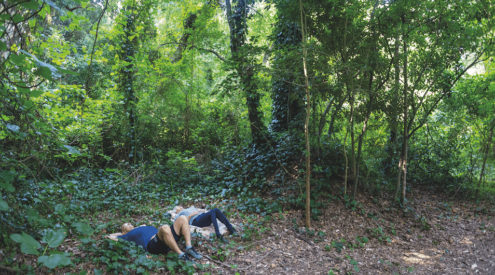Spekboom has been hailed a ‘wonder plant’ for its carbon offsetting capabilities. Initiatives like the Spekboom Challenge which has been shared widely across South Africa via social media, and the planting of a Spekboom Labyrinth in Stellenbosch are just some of the ways that South Africans are embracing the benefits of the plant.
This may be fine in the Eastern Cape and large parts of Sub-Saharan Africa where spekboom is indigenous, however, a botanist is concerned that planting a non-endemic species in the Western Cape could ‘trigger genetic pollution.’
Elzanne Singels, an environmental consultant and PhD candidate at the University of Cape Town’s (UCT) Archaeology Department, posted an image of a spekboom cutting that had been planted among lowland fynbos in Tokai Forest with a warning about the potential damage the ignorant action could have.
‘Spekboom is not indigenous to Cape Flats Sand Fynbos, it will colonize and become invasive in this habitat and threaten the already extremely threatened habitat and the endangered species that grow there,’ she said in the post.
Speaking to Lester Kiewiet on Cape Talk radio, Singels said that spekboom ‘in its natural habitat under drought stress has the ability to offset 20 kilograms of carbon per square metre.’ However, she also pointed out that ‘it’s no different to any other succulent plants, of which we have amazing diversity in South Africa. So all succulent plants will have an increased capacity to fix carbon in comparison to a normal plant.’
Although it’s not a problem to plant spekboom in your garden or to cook with it, planting it in wild areas or veld could cause massive damage to the Cape Floral Region.
‘In the cases where spekboom has been planted en-masse where it is indigenous (let’s say somewhere in the Thicket biome or Klein Karoo) it can still be a threat to biodiversity due to genetic pollution. Let me explain: plant populations have developed unique genetic composition in different regions, and indigenous plants in nurseries have been bred even further to exhibit the traits we like in garden plants. They are not an analogue for what grows in all regions in the wild. Planting out this stock in natural veld could be very harmful to natural populations.
In the best-case scenario spekboom is planted in previously transformed veld (or gardens), where it can be great for soil stabilization, can increase the carrying capacity for animals and can capture carbon.
Plant spekboom in your garden by all means! Cook with it, propagate it and share among friends to grow in their gardens and homes, but spekboom should never be planted in natural veld without consulting a rehabilitation or restoration specialist.’
Singles said that she loves it when people choose to plant indigenous flora, however, it’s important to do your research.
Also read: Spekboom project to reduce tourism industry’s carbon footprint
















